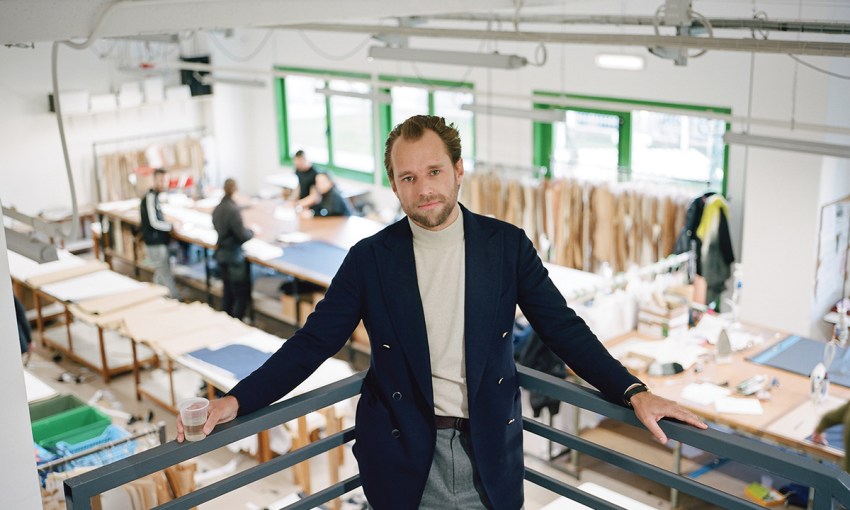Step inside the glamorous world of Adelaide-born designer Patrick Johnson whose custom tailoring business has showrooms in Tuscany, New York and London. The 42-year-old defines luxury as less about brands and more about a feeling, a freedom, a lifestyle that allows him to leave work and go to the movies with his young children.
Inside the world of luxury tailor Patrick Johnson
As a young boy growing up in Adelaide, Patrick Johnson remembers sneaking into his stepfather’s dressing room and marvelling at all the neatly arranged designer clothing.
Patrick’s stepfather was businessman Creagh O’Conner, a dapper and stylish role model for the youngster who has ended up running his own internationally recognised fashion label, P.Johnson.
“Creagh was probably the person who got me into clothes,” Patrick says. “He was the first man I met who really openly cared about his clothing, he had suits made on Savile Row, he had beautiful shoes and he had this amazing dressing room that we weren’t allowed into.
“He was quite strict, but I’d break in and I remember looking at his shoes and ties and overcoats. Somehow, he always knew when I’d been in there, though.
“He approached dressing in a practical way, he loved it, he loved beautiful clothing. I remember he gave me a pair of R.M. Williams boots when I was turning 16. They were his, he’d had them for 18 years, but they were in amazing condition. He’d worn them a lot but he really looked after them, shined them every night. Creagh gave me that appreciation of clothing and looking after things – he was a very stylish guy and still is.”
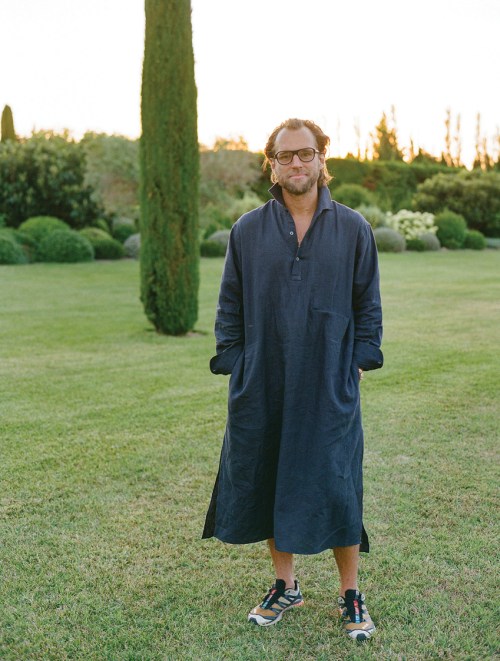
Patrick is talking to SALIFE from the Sydney showroom of P.Johnson, the custom tailoring business he established in 2008 and has since transformed into a global success story.
The company also has showrooms in Melbourne, London, New York and Tuscany and the brand’s signature design is its made-to-measure, lightweight suiting for men and women.
Patrick is quoted on the company website saying: “You should be able to wear a suit the same way that you wear pyjamas, unconsciously”.
He explains the inspiration that led him to launch such a niche, high-end tailoring business in a market crowded with fast fashion: “I like a certain style of suiting, lightweight and soft”.
“It’s so warm here in Australia and we lead quite a dynamic life and we travel a lot. I didn’t want an Italian- or English-style suiting. I always talk about living in Australia at the bottom of the world being such an advantage because we can take the best of the rest of the world and reinterpret it for now without history holding us back at all.”
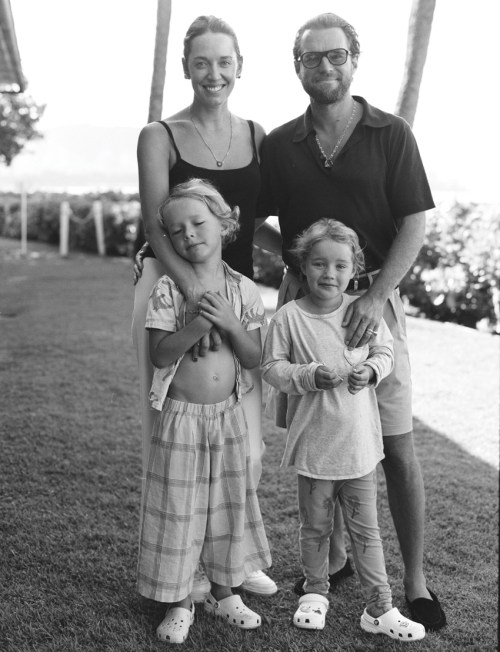
The other made-to-measure lines include knitwear, denim, swimwear, coats, shirting, sweats, leisurewear and formal. Fittings are usually by appointment only and the company also holds trunk shows across Australia, including Adelaide, North America and Asia. Private in-home fittings are also available, depending on where you live.
“What we offer is what we call made to measure or custom,” Patrick says. “We still cut a unique pattern for each client but it’s not made in a bespoke way, the word bespoke often gets misused.
“Real bespoke is only done by a very small number of people in the world. We only offer true bespoke in our London showroom because we have bespoke tailors and it involves four or five fittings on the body and the whole process takes three or four months.”
P.Johnson also does a ready-to-wear line, which includes men’s polo shirts, trousers, loafers, vests and travel coats, while the women’s range features blazers, tuxedo jackets, trousers, skirts, formal wear and more. There’s also a range of accessories including sunglasses, shoes and belts.
“We use a lot of Australian merino wool and a lot of linen that we get mostly from Northern Ireland and some from Belgium and a lot of technical fabrics from Japan, Portugal and Italy,” Patrick says.
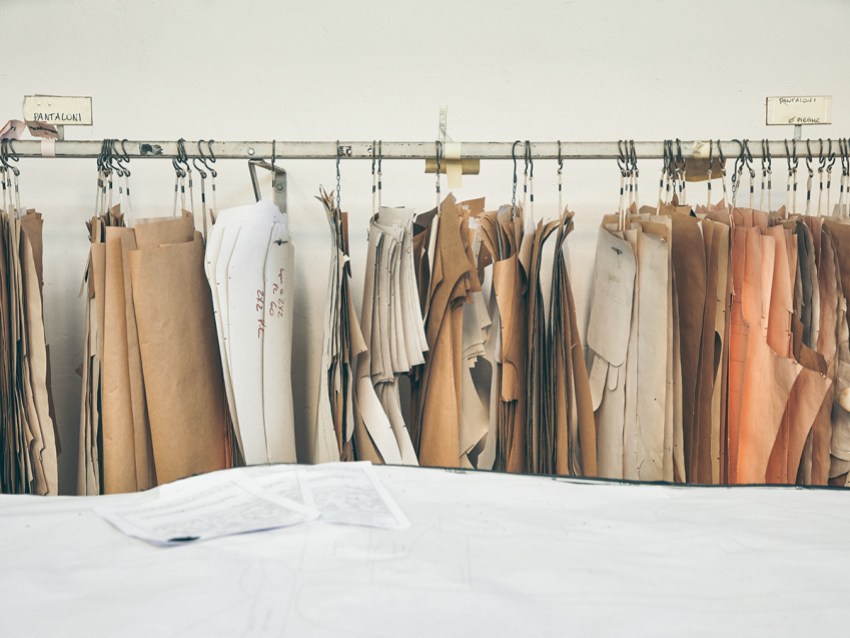
“We also do a lot of silk and we have a specialist weaver who we work with out of Como. So, I’ll find a piece of vintage clothing or an old reference to a vintage silk and I’ll say, ‘I think we should develop this’, and they are amazing. So, the fabric is a very big part of the business.
“In the men’s range we do everything from technical outerwear like the puffer vest, we do an incredible puffer vest that we fill with recycled cashmere, it’s called cashball and all of this technology is out of Italy, so we’re not using geese down. We also use very little leather other than shoes and belts.”
The 42-year-old is understated and low-key as he explains the creation and operation of his uber-luxe brand that boasts suppliers and manufacturers across the world – a factory on the coast in Tuscany, silk weavers in Como, fabric suppliers in Ireland – it’s all just a day at the office for this former St Peter’s College student.
“I had no desire to start my own factory but we couldn’t find anyone to do what we wanted, so we thought we’ll just start it ourselves and we did,” he explains. “That was a combination of naivety and a bit of need as well.
“I ended up deciding on Tuscany because the way they make suits there, they have a strong history and we wanted to offer our clients the best of what is available in Italy. That meant we needed to commit to our very own production base. So, six years ago we invested in a small workshop in Tuscany that we had previously worked with. It was there that we created our signature suit, the Sartoria Carrara.
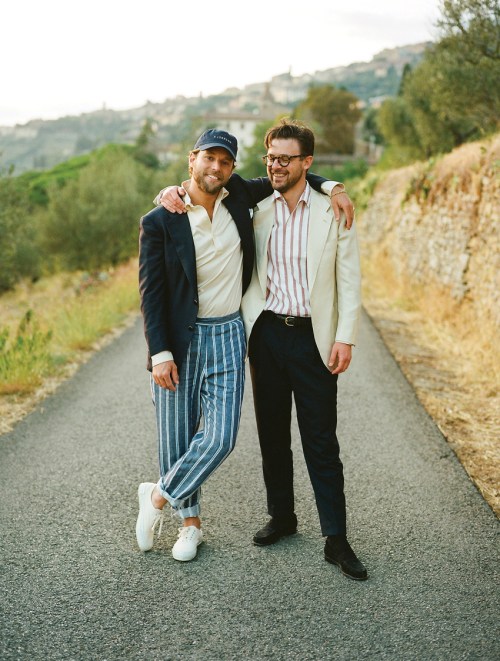
“We also have workshops in Spain, Poland, China, we make shoes in France and Italy. To be honest I don’t care where things are made so long as they are made ethically and the people in the factory are looked after and I can give my clients the best value, well-made items.
“We also try to be zero waste. So, we do sell short-run, ready-to-wear and you pay a premium for it, but it means we don’t waste as much, so it balances out.”
Of course, all this custom-made quality comes at a cost – and that’s something Patrick makes no apologies about. His suits range in price from $1000 to $2500.
“We are not at the top end of prices, but the suit is handmade so it won’t be inexpensive,” he says. “We try to accommodate everyone, but it gets to the point where I’m just not willing to make a suit of that quality and to make those compromises.
“Most of our clients are in the 30-55 age zone and I think that’s the reason our clothing is not inexpensive and does have a certain price point.”
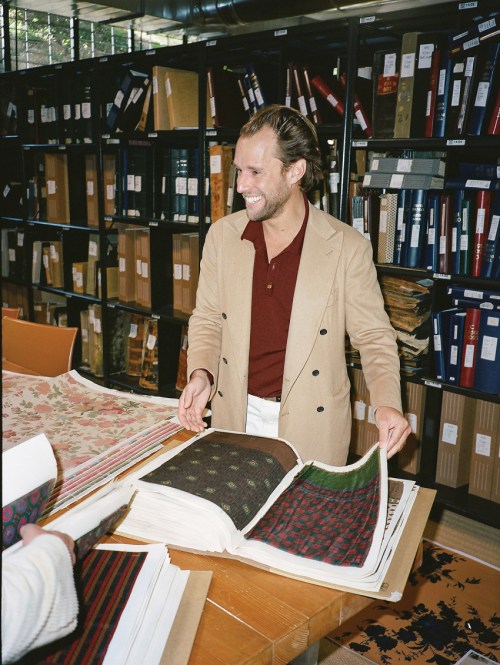
A clue that Patrick was destined for a life in design occurred when he was just 12 years old. His mother Sue Chenery, an established Adelaide artist, used to buy fashion magazines and young Patrick remembers reading an article about designer Ralph Lauren.
“I just remember thinking, ‘Woah, this kid from the Bronx can create this entire world from his imagination and with hard work’,” Patrick says. “I just found it so interesting and exciting.
“I think I was inspired by this idea of being able to create something beautiful from your imagination, but at the same time, something that’s very practical … it’s not an artwork so much, it’s a lifestyle that they’ve created.
“After that, I saved up for the first piece of clothing that I bought myself – a purple Ralph Lauren rugby top that I didn’t take off for a very long time. Mum had to peel it off me.”
Sue was also a stylish and creative mentor for young Patrick, and his siblings Sam and Sophie, and she used to handmake a lot of her children’s clothes.
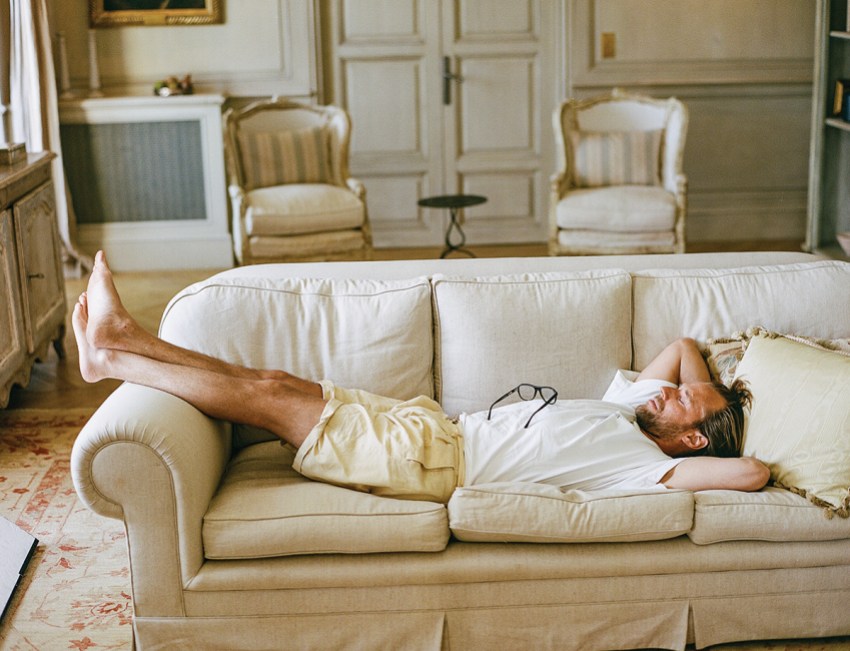
When Sue was married to Creagh, the family lived at Buckland Park, a well-known, early pioneer property near Two Wells in Adelaide’s north and the children would commute to school in the city.
Patrick has warm memories of riding horses and dirt bikes around the farm during this semi-rural stage of his early life.
“It was quite large, a bit over 10,000 acres, so you really felt isolated, it wasn’t a hobby farm, it was a working farm,” he says. “We also entertained a lot and there was always something going on, including some filming, they filmed some of Shine out there as well as other shows; I remember Gary Sweet being there.”
Once Patrick finished Year 12, there was an unspoken expectation that he may follow his father, Tony Johnson, into legal life. Tony is a founding partner of Adelaide law firm Johnson Winter Slattery and is the current chairman of several boards including The Adelaide Community Healthcare Alliance and transport company K&S Corporation Limited.
“Dad’s been another great mentor for me,” Patrick says. “He’s done a lot in business and has been a huge help. I speak to dad nearly every day still.”
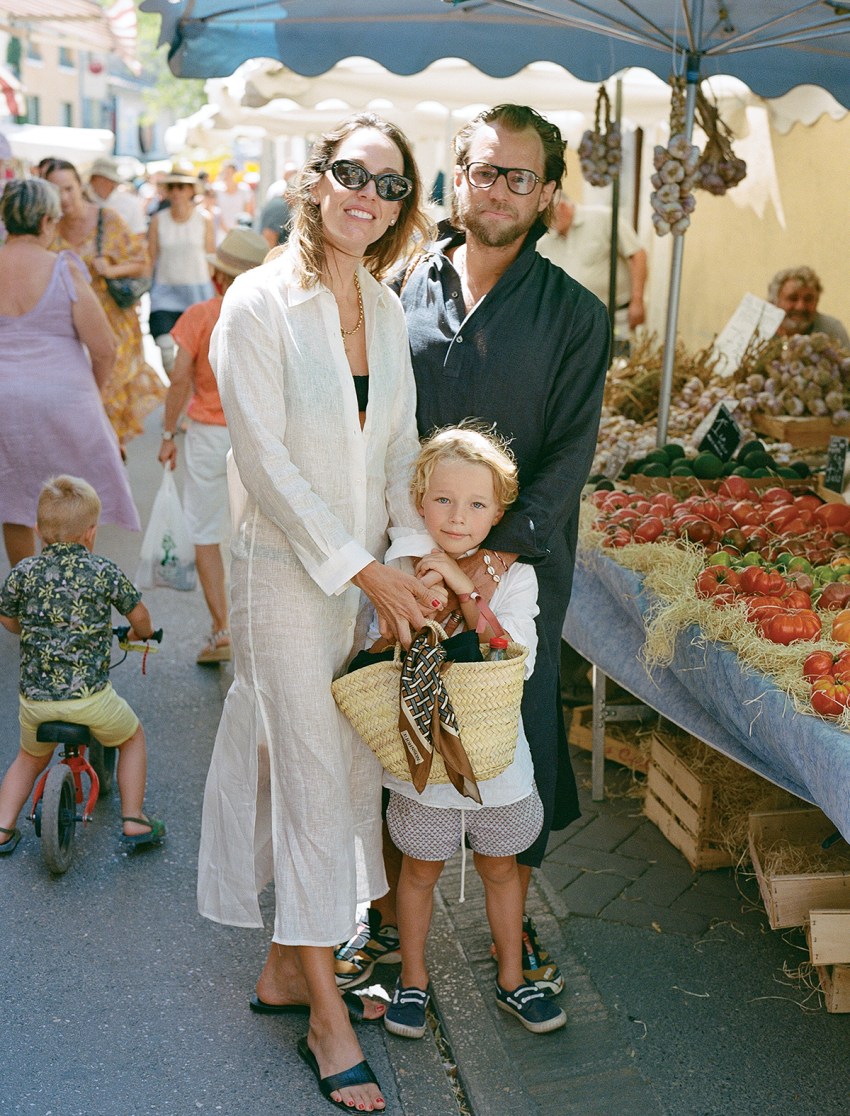
Patrick’s siblings, Sam and Sophie, ended up studying law, as did their mother, Sue, and Patrick’s stepmother, Christine, is also a lawyer.
But Patrick had more of a scientific bent and decided on a winemaking course at Roseworthy College: “I was just really keen to go travelling when I finished school but Dad suggested I get a degree first and then go off and explore, which was good advice.”
On the day he graduated, Patrick jumped on a plane to Europe, having lined up a job in the south of France. But after experiencing a physical reaction to the sulfur dioxide used in the winemaking process, Patrick gave it all away and moved to Cambridge where his brother Sam was studying law honours.
“I think everyone has a creative side and my brother knew I’d always been interested in art and he said to me, ‘Just find something you’re passionate about and go for it’,” Patrick says.
“He really pushed me at that time and was instrumental in getting me on my path to design.”
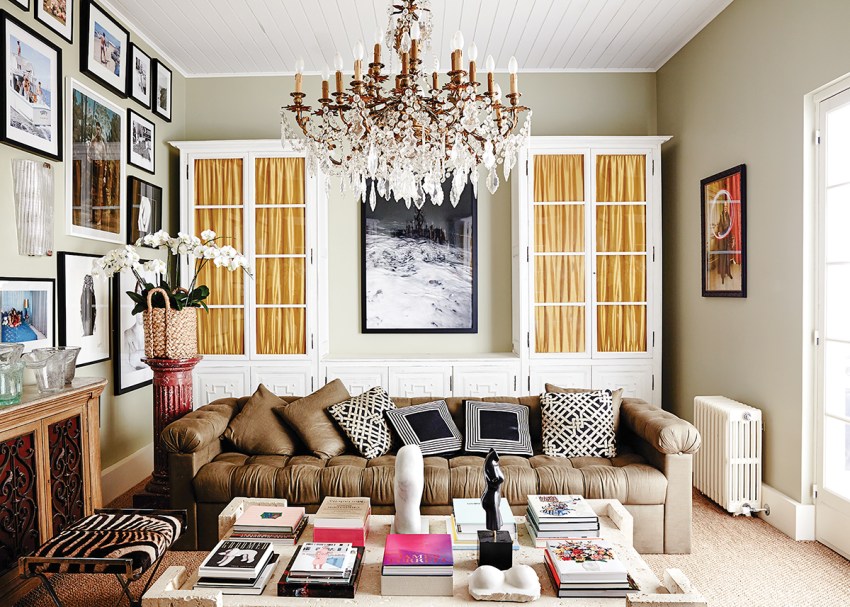
Patrick enrolled in design studies at Central Saint Martins – University of the Arts London, working part-time in a pub and vintage clothing store to pay his way.
By lucky chance, a high-end shirting store, Emmett London, was near the pub where he worked and Patrick got chatting to the owner, Robert Emmett, out the front one day and he offered the young Aussie a job.
“He said, ‘You can teach me about wine and I can teach you about clothing’,” Patrick recalls. “I was in such a rush to learn on the job that I dropped out of the course very quickly and spent the next six or seven years working there.
“It was a retail clothing store and Robert is a tailor who specialised in shirting. We set the standard, and to me, it was also an education in being a merchant, how to retail. I fell in love with that side of it, how you can visually merchandise a store. I also loved meeting customers and working out how you could help them towards what they needed and help them build a wardrobe, building up a good relationship with them.
“So, I was on the shop floor for a long time and then I ended up managing his business and I also started the online part of it. Robert was reasonably hands-off, so it meant that I got to learn a lot on the job, which I really loved.”
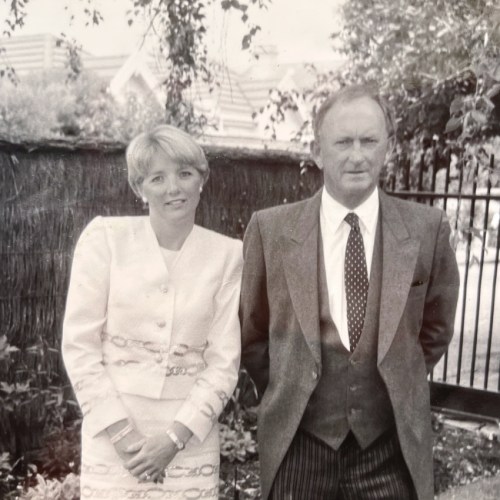
Robert also took his young apprentice on fabric buying trips across Europe and introduced him to fashion contacts around the world. Patrick’s good mate, Tom Riley, whom he’d met when they were both studying winemaking, came to visit from Australia. Patrick was too busy to take time off work, so Tom would sit in the Emmett London store and chat and observe.
When Patrick returned to Australia in 2008 and set up P.Johnson, he brought Tom on-board as a business partner in 2009. The company now employs about 100 people.
“In the beginning, it was just me and a suitcase going around measuring people. I couldn’t afford air tickets, so I’d drive Sydney, Melbourne, Adelaide,” he says. “I did a bit of cold-calling early on and I used to get hung up on. I did that every morning for a couple of years. I hated it, but things just built from there. Gradually, word of mouth started to pay off, we don’t advertise, it’s all word of mouth. So, I’d do one big job which would lead to the next, until we got to the point where we could fly around and then we got to the point where we could have showrooms.”
Since then, P.Johnson has developed into a luxury brand whose clients include several former Prime Ministers, US actors and politicians, not that Patrick is naming names – discretion is all part of the service.
Like his designs, Patrick’s outlook is all about simple and fuss-free – based in creating a lifestyle around doing what you love and not trying to be part of the “shiny set” as he calls them.
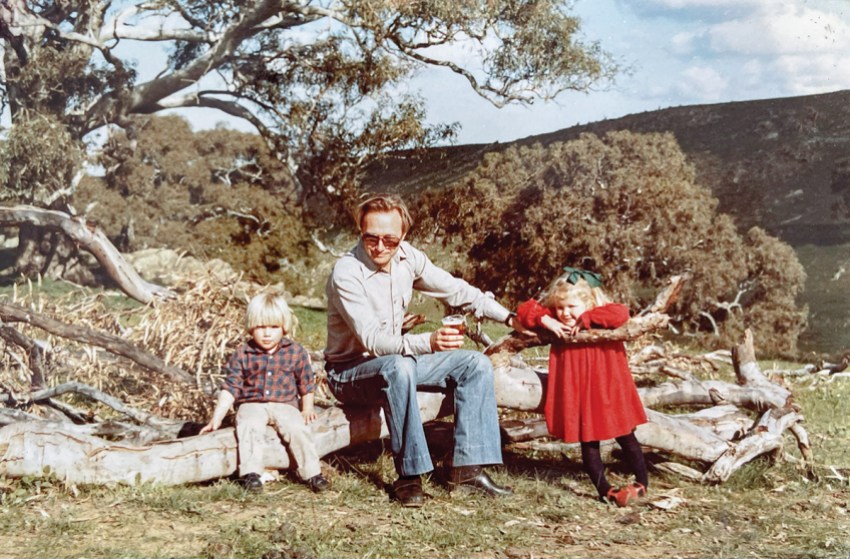
“It’s not about being the shiny set, being all flashy, it’s about actually just having great things that you get great enjoyment from and they’re not always expensive, to be honest,” says Patrick, who was named GQ magazine’s Designer of the Year in 2015.
“Robert Emmett taught me how to pursue a career that you enjoy, base it around the lifestyle you want and balance it with other parts of your life. The idea of P.Johnson is trying to create that feeling of freedom when you’re wearing it, you feel very unencumbered in it.
“Luxury is a very hard thing to define because it’s a word that is used so much. To me, luxury is an experience, a feeling, it’s less about a Chanel handbag and more something about how you feel. Like today, for example, being able to take time off work to take my little boy to the movies. It’s that feeling and freedom.”
Patrick is married to high-end interior designer Tamsin Johnson, whose office is near her husband’s showroom in Sydney’s upmarket Paddington. Tam is also internationally accomplished in her work, creating luxurious residential and commercial interiors for clients in New York, Paris, London and Australia.
She has also recently renovated the couple’s antique-filled home in Sydney’s prestigious Darling Point where they live with children, seven-year-old Arthur, and Bunny, five. The couple are also keen contemporary art collectors, and their home is full of an eclectic mix of both Australian and international pieces. Tamsin grew up in Melbourne and the couple met when they were both living in London.
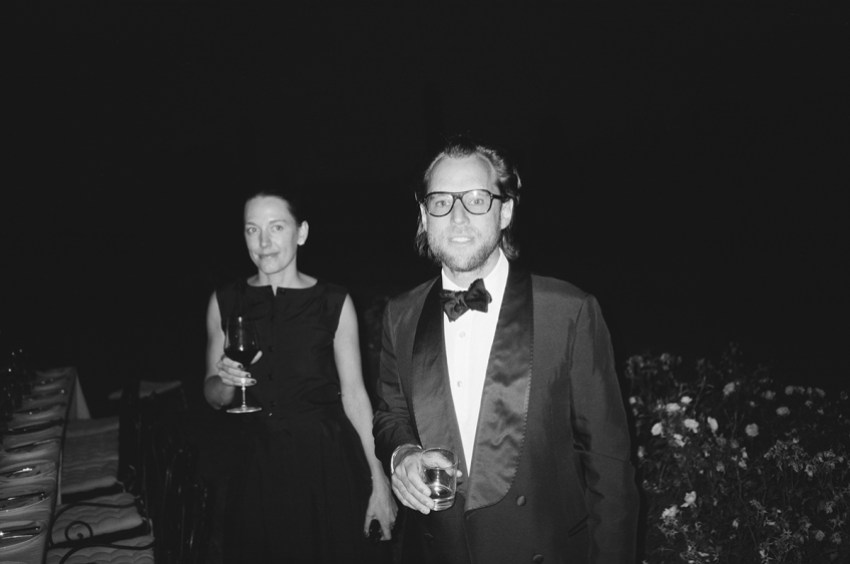
“Tam is amazing. There is a lot of cross-over with our worlds, but she’s incredibly accomplished and has done a lot of big projects around the world,” Patrick says, adding that prestigious New York publishing house Rizzoli has recently released Tam’s first book Spaces For Living.
The family visits South Australia when they can and usually heads straight for the Fleurieu Peninsula where Patrick’s father has several properties including a luxury accommodation retreat called Naiko.
“It’s so stunning down there and I know I’m biased because I grew up around it, but I think the Fleurieu is the most beautiful country in the world,” says Patrick, who loves his sport, particularly tennis. “We love it, camping and fishing with the kids.”
The designer, who is a meditation advocate, exudes a quiet confidence, self-assured, almost zen, so it makes sense that the P.Johnson motto is “Live slow, die old”. “It’s all about slowing down and enjoying the time you’ve got here,” Patrick says. “I try not to stress too much about things, because for me clothing isn’t even in the top five most important things in my life. It’s a great job, I love it and I’m passionate about it but, you know, I’ve got so many other things in my life that give me joy.”
He says the company is all about slow, steady growth, building a sustainable and enjoyable work culture for his staff and clients, always with longevity in mind.
“Hopefully one day down the track, we can hand this business over to the next people to do it, but we’ve tried to set up a business that lasts and I’m talking about having a business that lasts 100 years, not having a private equity sale or anything like that. We don’t want to jump out of it. We want to do this forever,” he says.
“We’ve all got that movie running in our heads when we’re walking down the street, having a sunny day and feeling good, that little movie about who we are and what we’re doing. What we’re trying to do is make the wardrobe for that movie, helping people dress well and feel better about themselves. That’s what it’s about.”
This article first appeared in the September 2023 issue of SALIFE magazine.



